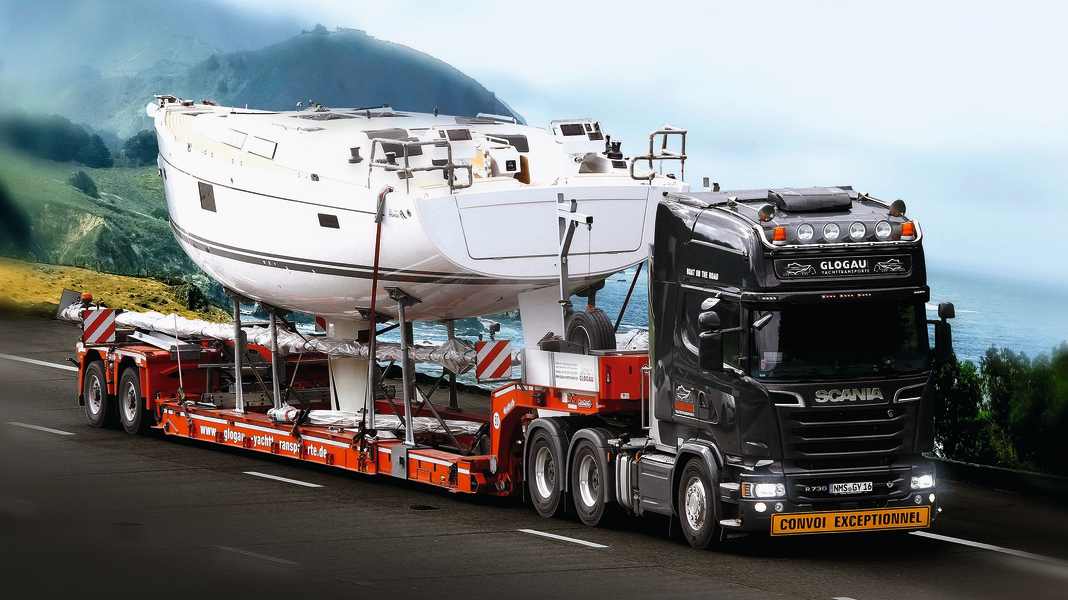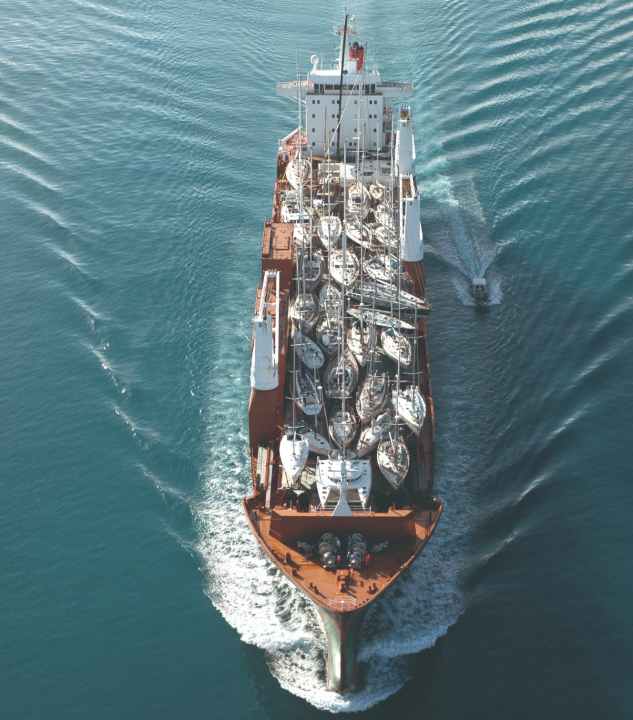Change of destination: Off to the south - everything you need to know about transporting your sailing yacht
Andreas Fritsch
· 18.11.2024

Not all owners have the time or inclination to drive their boat the long way themselves. They prefer to have it transported by lorry. But what does it cost and what do you need to bear in mind? Saskia Neumann-Glogau from Yachttransporte Glogau knows all about this. The company has been routinely transporting boats throughout Europe for decades.
"In fact, the change of area is an issue in both directions," she explains. "We have owners who want to go to a warm place for a few years or because of a particular regatta. There are also more and more customers who buy a boat in the Mediterranean and then have it transported to the Baltic Sea. But the bottom line is that we bring more boats south than north!"
Mast-only transport is also an issue. "People who transport their boat themselves usually want to send the mast separately. We can either include it in another transport, or we bundle several requests and then transport three or four masts together," says the expert. In this case, the lead time is naturally longer. However, the costs are significantly lower: a 15-metre pole costs around 1,000 euros for collective transport. If it were to be transported solo, you would have to reckon with up to 4,000 euros.
Boat width is crucial for transport
When transporting boats, width, height and the destination country are decisive for the price. "Italy is more expensive than France or Slovenia due to complex authorisation requirements. And the lead time is longer: we have to plan a transport to Italy at least three weeks in advance, whereas one to two weeks is enough for Slovenia and France," says Neumann-Glogau. This is why the most popular routes are those to Port Napoléon or to Koper and Portoroz in Slovenia. Croatia is also a little more complicated, but not like Italy.
The width of the boat is also important: "From three to three and a half metres, we need an escort vehicle for the truck, and from four and a half metres in France we need two." The height of the ship is also relevant. If it has a deep keel and is very high, clearance heights are often a problem. Shipyards therefore often ship new boats over 50 feet without a keel. This is then only fitted at the destination - not an option for private owners.
Route planning is complicated. "In Germany and neighbouring European countries, there are a huge number of roadworks that have restrictions in terms of width or height. Or sections are temporarily closed." This has to be checked for each individual journey and detours worked out. Large haulage companies hold permits for some countries and buy them in stock, so to speak, which shortens waiting times for the authorities.
Change of territory: This is how much transport to the Mediterranean costs
Due to the many variables, the freight forwarder is reluctant to commit to a price, but she does give a guideline: "For a ten to twelve metre boat that is around three and a half metres wide, transport from the Baltic Sea to France costs a little under 10,000 euros. To Slovenia it's around 8,500 euros.
Canopies, sprayhoods or tarpaulins should be removed for transport. Attachments such as aerials on the pushpit or flybridges should also be removed. All standing goods should be removed from the mast. It also makes sense to wrap it in foil. Below and on deck, everything loose must of course be well secured, as for a long sea voyage.
And, importantly, the owners should be Insurance clarify whether the policy covers land transport!
Instead of land transport by lorry: sea transport by freighter brings yachts to the Mediterranean
The date is also crucial. Neumann-Glogau: "Spring is our peak season, as the shipyards deliver a lot of new boats. We may be fully booked for eight weeks." So it's better to enquire early, preferably two to three months before the launch.
Another solution is sea transport, i.e. piggybacking on freighters. Providers such as the Dutch company Sevenstar specialise in this. It has 140 ships in service worldwide.

"We have monthly departures from northern European ports to the Mediterranean and vice versa," explains Julia Sebastiani, who represents the company in Germany. The ports of departure are Kiel or Ijmuiden, for example, and the destinations are Palma, Genoa or Split. The transport takes around ten days. The ships are lifted on and off board with the mast upright by the ship's own crane. Sails, bimini and the like have to be removed. Prices are only available on request. However, it is clear that the lorry alternative is cheaper.

